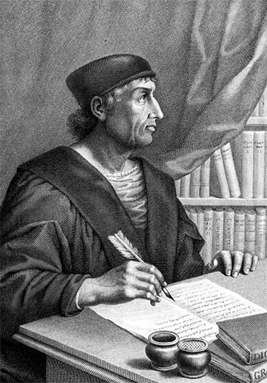Hello, internet users!! Welcome to our magazine. We're very happy and excited to present you our new work. Here you'll find many articles about history that will make you learn a lot of new things. New articles every week. We hope you like it! LET'S GO BACK TO THE PAST...
Tuesday, 3 May 2016
EDUCATION DURING THE RENASANCE (by Ángela Jimeno)
During the renaissance period education was viewed as one's own choice, not God's decision to be educated. Education was known as "Humanism" during this era.
The Humanists of the Renaissance created schools to teach their ideas and wrote books all about education. Humanist education was thought at the time as being an important factor to the preparation of life. Its main goal was to improve the lives of citizens and help their communities.
The children that attended the schools were generally from upper-class families, though some seats were reserved for poor but talented students. Females were not usually allowed to attend but were encouraged to know history, learn dance, and appreciate poetry. Public schools for everyone were still a long way off. Liberal arts were viewed as the key to freedom, which allowed humans to achieve their goals and reach their full potential. Liberal studies included philosophy, history, rhetoric, letters, mathematics, poetry, music and astronomy. Education for Renaissance boys was of two sorts. There was classical education based on the Latin language for boys who planned to go on to a university. There was also education through apprenticeships for boys who planned to pursue a trade.
Girls received less education than boys during the Renaissance. Some girls did become well educated in the classics, and some also became apprentices. Many more were educated mainly in practical matters at home. In some cases, when a woman received an education it was said that it was for the benefit of a man.
Overall Humanist schools combined Christianity and the classics to produce a model of education for all of Europe.
Subscribe to:
Post Comments (Atom)

No comments:
Post a Comment